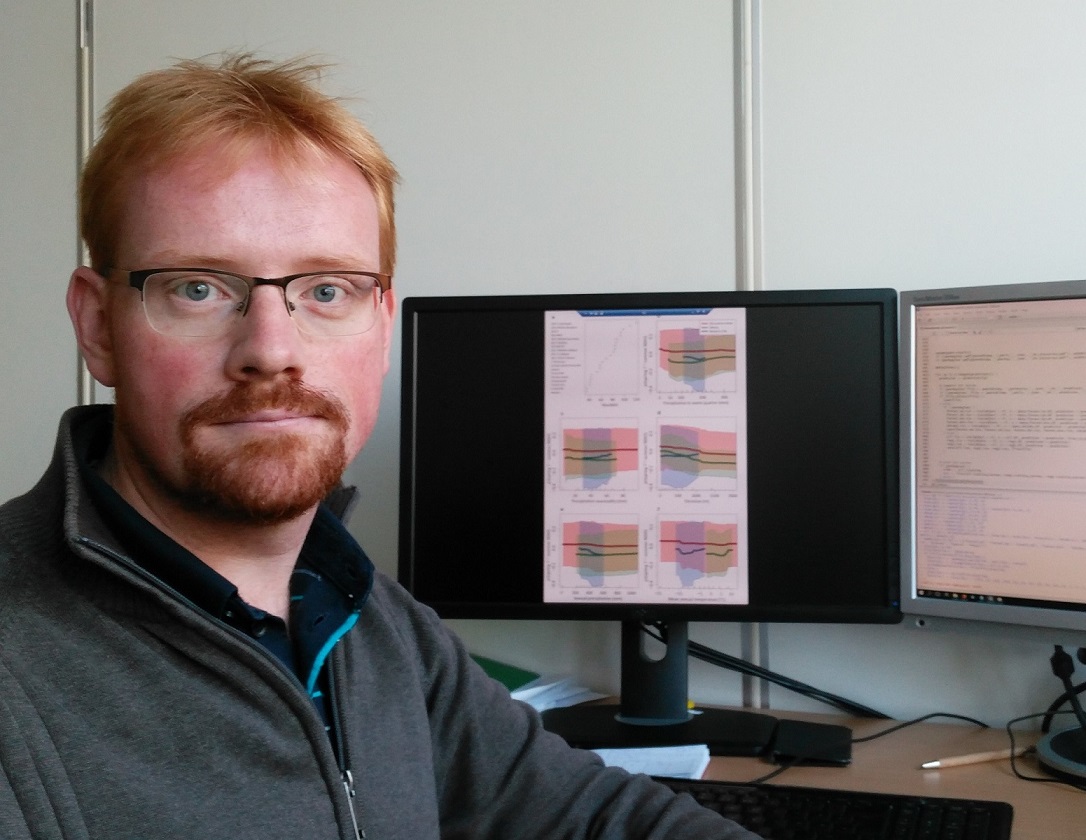About
Matthias Forkel is an environmental scientist and Junior Professor for Environmental Remote Sensing at TU Dresden, Germany. His main research interest is the development and application of optical and microwave satellite observations, and global ecosystem models to quantify changes in land ecosystems, vegetation and the carbon cycle and their feedbacks with the climate. He aims to combine the specific advantages of satellite observations and ecosystem models through model-data integration and machine learning approaches to predict climate impacts on vegetation phenology, productivity, carbon cycling, and disturbances.
Matthias' research group at TU Dresden

Professional research experience
- since 09/2019 | TU Dresden, Dresden, Germany | Junior-Professor for Environmental Remote Sensing, Faculty for Environmental Sciences
- 2016-2019 | TU Wien, Vienna, Austria | PostDoc at the Department of Geodesy and Geoinformation, Climate and Environmental Remote Sensing Group
- 2011-2015 | Max Planck Institute for Biogeochemistry, Jena, Germany | PhD candidate, later PostDoc at the Department of Biogeochemical Integration
- 2009-2010 | Friedrich Schiller University, Jena, Germany | Scientific assistant at the Department for Earth Observation
Education
- 2015 | PhD (Dr. rer. nat.) | Friedrich Schiller University, Jena, Germany | Thesis: Controls on Global Greening, Phenology, and the Enhanced Seasonal CO2 Amplitude – Integrating Decadal Satellite Observations and Global Ecosystem Models
- 2008-2010 | M.Sc. | Friedrich Schiller University, Jena, Germany | Master degree in Geoinformatics
- 2005-2008 | B.Sc. | Friedrich Schiller University, Jena, Germany | Bachelor degree in Geography
Awards and scholarship
- 2018 | Best Paper Award by the Faculty of Mathematics and Geoinformation of TU Wien | Awarded paper: Forkel et al. 2017 GMD
- 2016-2018 | Living Planet Fellowship by the European Space Agency
- 2016 | Beutenberg Campus Science Award, Jena, Germany | Best PhD thesis in Life Sciences and Physics in 2015
News
Selected tweets from @MatthiasForkel and @EnvRS_TUD
Role of past bark beetle disturbances and fuels on fire intensity and severity: Here we provide the first scientific peer-reviewed and observation-based investigation of the forest fire in the Bohemian-Saxon Switzerland 2022: https://t.co/kpR0Sb4GGe Read more ... 1/8🧵 pic.twitter.com/VgHgR7BIBA
— TU Dresden - Environmental Remote Sensing (@EnvRS_TUD) June 6, 2024
Can we use tomographic SAR🛰️to estimate forest structure🌳? Our Xiao Liu found good performance of #TomoSAR for biomass of tropical forests #GEDI. We show the potential for estimating the vertical distribution of biomass @eebiomass . https://t.co/mLezDOSTlF @NASAEarth @DLR_en pic.twitter.com/IqTrDHjy0u
— TU Dresden - Environmental Remote Sensing (@EnvRS_TUD) April 23, 2024
What can we 'measure' with 🛰️satellite-derived Vegetation Optical Depth #VOD? Is it #biomass 🌳, #water 🫧 or just leaf area index 🍃? Led by Luisa Schmidt, we published a new paper in which we investigate the sensitivities of VOD to vegetation properties. https://t.co/O0JV6UMQH8
— TU Dresden - Environmental Remote Sensing (@EnvRS_TUD) March 16, 2023
New year - new paper🎇: Estimating leaf moisture content from passive microwave satellite observations of vegetation optical depth (VOD). We describe a new method and global dataset of vegetation leaf moisture content 🌲🫧: https://t.co/NG87SSZxoI @MatthiasForkel
— TU Dresden - Environmental Remote Sensing (@EnvRS_TUD) January 2, 2023